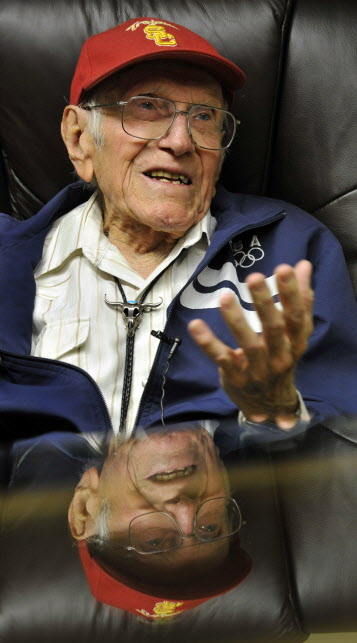 P-51 pilot Osce R. Jones poses beside his aircraft. (Photo provided by Carol Ann Jones Lizana)
P-51 pilot Osce R. Jones poses beside his aircraft. (Photo provided by Carol Ann Jones Lizana)
By George Morris
Many veterans returned from World War II with stories to tell, and most relied only on their memory.
P-51 fighter pilot Osce R. Jones, had something more tangible — a diary.
Forced down over occupied France by antiaircraft fire the day after the D-Day invasion, Jones, of Baton Rouge, Louisiana, spent a week trying to evade capture and work his way back to England. He got caught, but while the events were fresh on his mind in a POW camp, he wrote about his experiences in a tiny notebook. His wife, Thelma, kept the notebook after he died in 1994.
“He had to write real small, because they didn’t have much paper,” she said.
The small print told a big story.
 This flag, on display in the National Museum of the Pacific War in Fredericksburg, Texas, was made by prisoners of war held by the Japanese and is similar to one made by POWs held in Davao, Philippines, and Toyama, Japan, during World War II. (Photo by George Morris)
This flag, on display in the National Museum of the Pacific War in Fredericksburg, Texas, was made by prisoners of war held by the Japanese and is similar to one made by POWs held in Davao, Philippines, and Toyama, Japan, during World War II. (Photo by George Morris)
 Bilibid Prison, a POW camp during World War II
Bilibid Prison, a POW camp during World War II POWs being evacuated from Stalag Luft IV, early 1945 (Source: http://www.dvrbs.com/camden-heroes/CamdenHeroes-FrankGramenzi.htm)
POWs being evacuated from Stalag Luft IV, early 1945 (Source: http://www.dvrbs.com/camden-heroes/CamdenHeroes-FrankGramenzi.htm)
